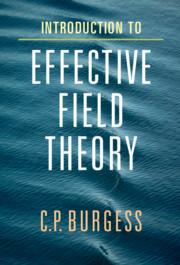
-
Select format
-
- Publisher:
- Cambridge University Press
- Publication date:
- 04 December 2020
- 10 December 2020
- ISBN:
- 9781139048040
- 9780521195478
- Dimensions:
- (246 x 189 mm)
- Weight & Pages:
- 1.52kg, 660 Pages
- Dimensions:
- Weight & Pages:
You may already have access via personal or institutional login
Book description
Using examples from across the sub-disciplines of physics, this introduction shows why effective field theories are the language in which physical laws are written. The tools of effective field theory are demonstrated using worked examples from areas including particle, nuclear, atomic, condensed matter and gravitational physics. To bring the subject within reach of scientists with a wide variety of backgrounds and interests, there are clear physical explanations, rigorous derivations, and extensive appendices on background material, such as quantum field theory. Starting from undergraduate-level quantum mechanics, the book gets to state-of-the-art calculations using both relativistic and nonrelativistic few-body and many-body examples, and numerous end-of-chapter problems derive classic results not covered in the main text. Graduate students and researchers in particle physics, condensed matter physics, nuclear physics, string theory, and mathematical physics more generally, will find this book ideal for both self-study and for organized courses on effective field theory.
Awards
Winner, 2022 PROSE Award for Chemistry and Physics
Reviews
‘This book can serve as a reference work for graduate students of theoretical physics as well as a professional reference … Recommended.’
M. O. Farooq Source: Choice
Contents
Metrics
Altmetric attention score
Full text views
Full text views help Loading metrics...
Loading metrics...
* Views captured on Cambridge Core between #date#. This data will be updated every 24 hours.
Usage data cannot currently be displayed.
Accessibility standard: Unknown
Why this information is here
This section outlines the accessibility features of this content - including support for screen readers, full keyboard navigation and high-contrast display options. This may not be relevant for you.
Accessibility Information
Accessibility compliance for the PDF of this book is currently unknown and may be updated in the future.


